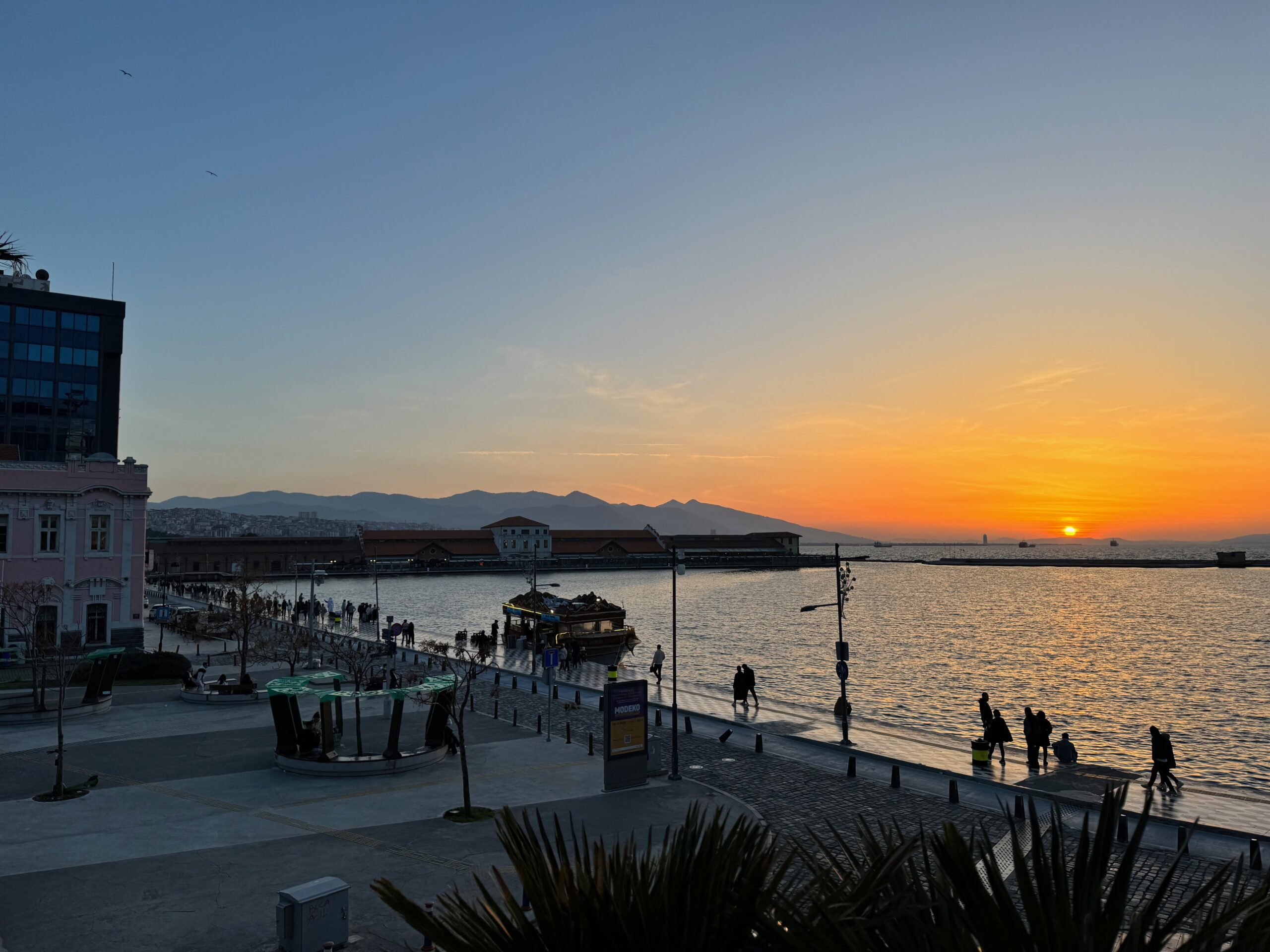In travel, things tend to even out. Some experiences overdeliver while others underimpress. In the end, a site you never intended to visit or have heard little to nothing about is just as likely, if not more, to take your breath away than the famous site which everyone has told you about.
I had one of those weekends in Turkey recently. For years, I’ve wanted to go to Izmir so that I could see the ancient city of Ephesus and the icy blue waters of the snow-white Pamukkale which are not far off. So, at the end of a trip to Istanbul, I booked a long weekend at the still very new Izmir Marriott to serve as my base and spent a wonderful weekend at some of Turkey’s most famous tourist attractions: the dual site of Pamukkale and Hierapolis and the storied Roman city of Ephesus.
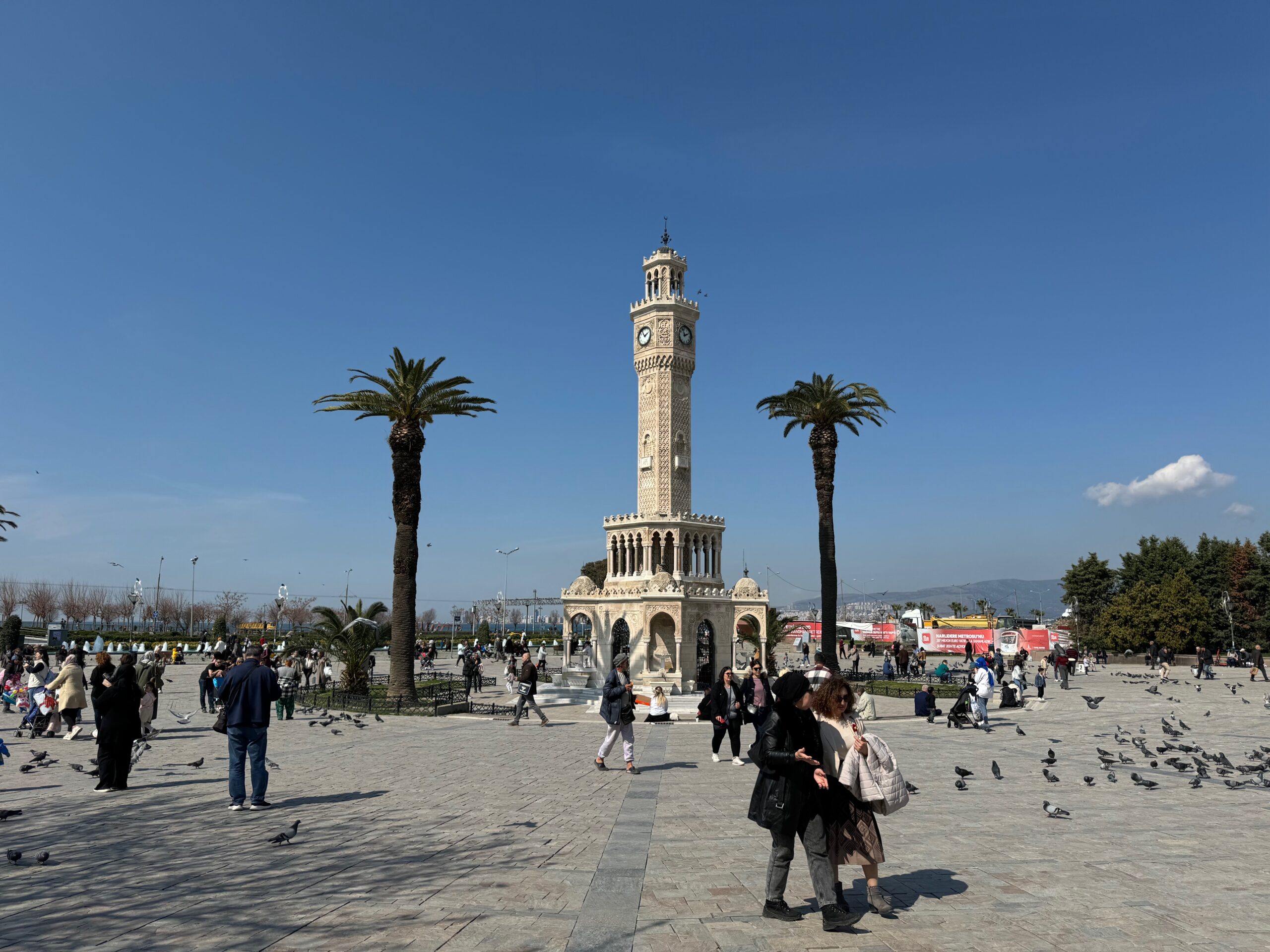
A few days exploring Izmir
Turkey is a country of culinary delights and I discovered a new treat in Izmir. To be honest, I don’t think it even originates in the city, but because I was unable to partake in my favorite Turkish sweet shop, Hafiz Mustafa (as they don’t have a location in the city), instead, I stumbled upon the sweet shops of Helvaci Ali and Helvaci Yaqub Effendi. These shops serve a concoction of sweetened semolina atop Turkish ice cream. Although there are multiple flavors, the rich and buttery pistachio option was the one I had about four or five times throughout the course of the weekend. Absolutely spectacular.
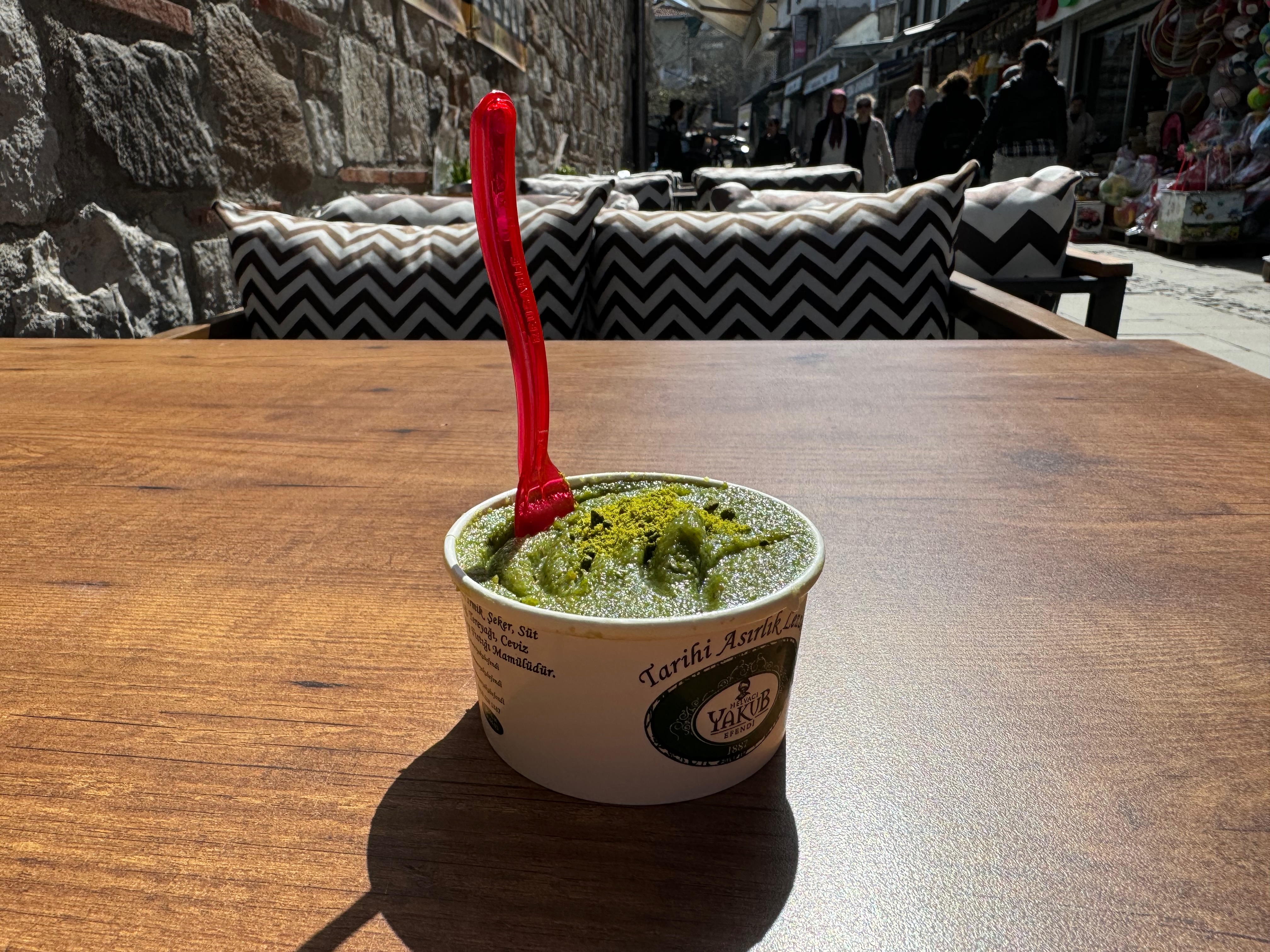
Otherwise, I had a couple of nice doners and fish dinners, explored the market, took in the famous clock tower square and walked on the kordon along the water where a fisherman was displaying an impressively large bream that he’d caught. I also spent an afternoon at the ancient city of Smyrna, around which the modern city of Izmir sprung up but it wasn’t nearly as impressive as the sites I would see in the subsequent days.
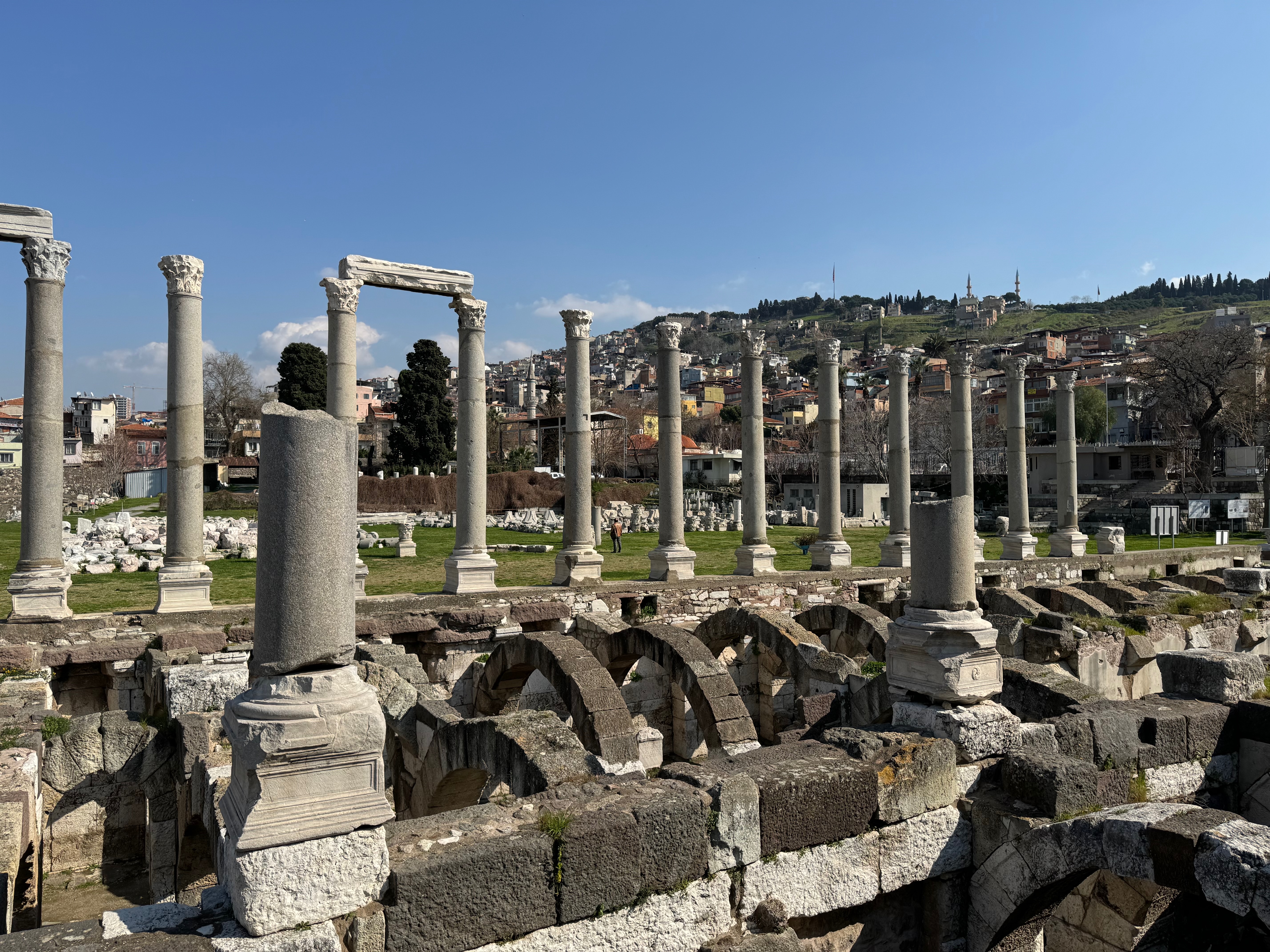
A day at Ephesus (Efes)
Ephesus is often referred to as one of the best-preserved Roman sites in the world. I think that’s why I had such high hopes for the ancient site. While it is a worthwhile experience, It didn’t seem significantly more impressive than other Roman sites I’ve visited (Beit Shean in Israel, fore example). I went to the train station the day before to ensure I would have a ticket and paid just 60 Turkish Lira ($1.10) for the 80-minute ride each way to the city of Selcuk. As with many countries, they require you to bring your passport when you buy a ticket so be sure to bring yours along.
Once at the Selcuk station, I met the guide that I’d booked, who was instrumental in helping to explain the context around the rise and fall of Ephesus. For instance, I would not have known that the flat plain at the bottom of the valley was actually under the sea some 2,000 years ago, which helped to cement Ephesus’ reputation as one of the most important port cities of the ancient world. Sometime in the 400s AD, a nearby river caused the harbor to silt up and today it is bone dry.
I think when I heard that Ephesus was the best-preserved Roman site in the world, I was just expecting it to be a little bit more preserved. While Ephesus’ Terraced Houses, a cluster of houses which had belonged to the elite, were quite impressive with their frescos and mosaics still intact, the rest of the town (only 25% of which is excavated) struck me as just a bit lackluster. Columns and marble fragments everywhere, but I guess I was just expecting something a little more recognizable.
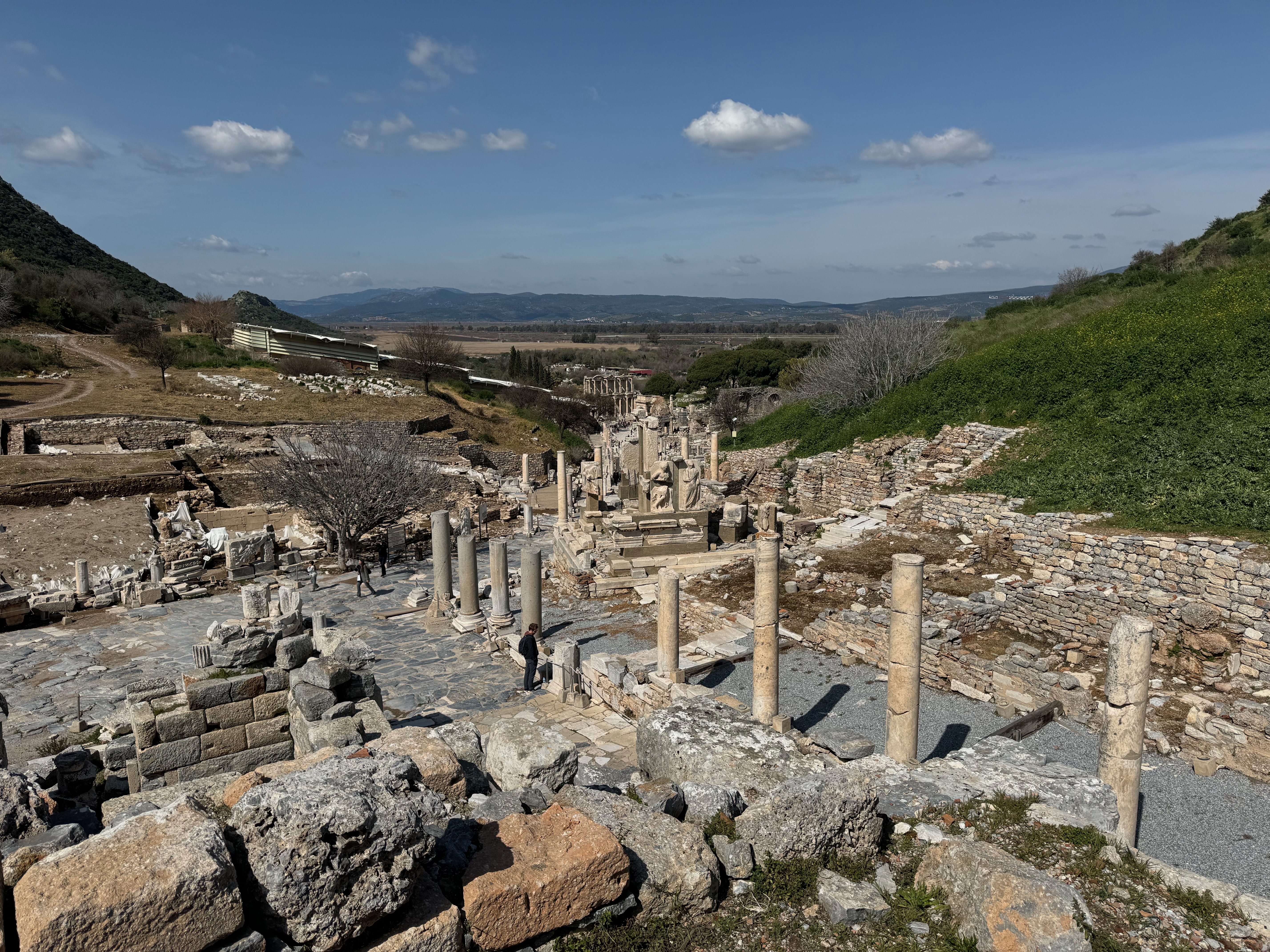
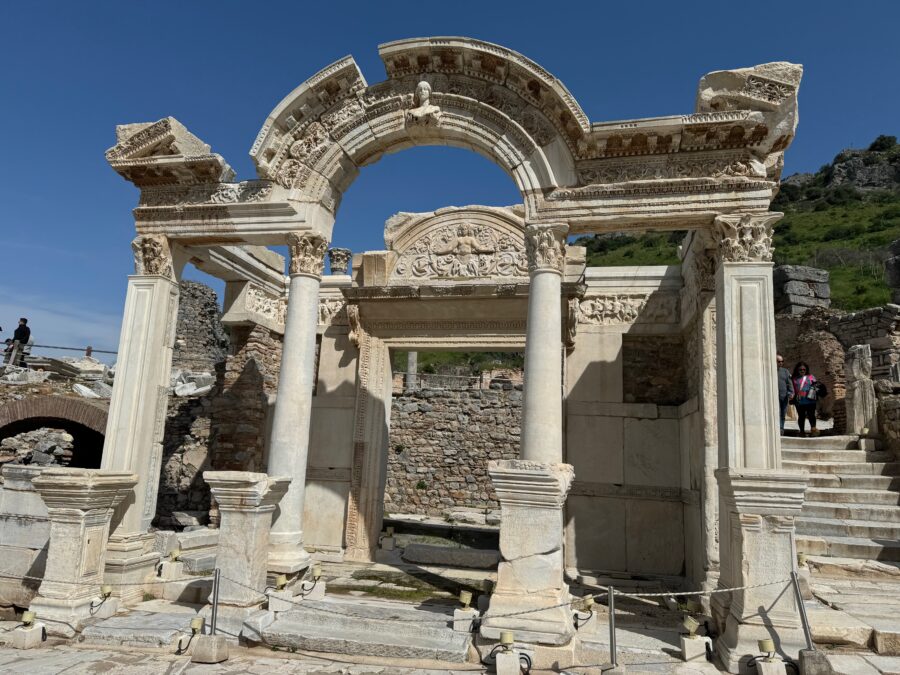

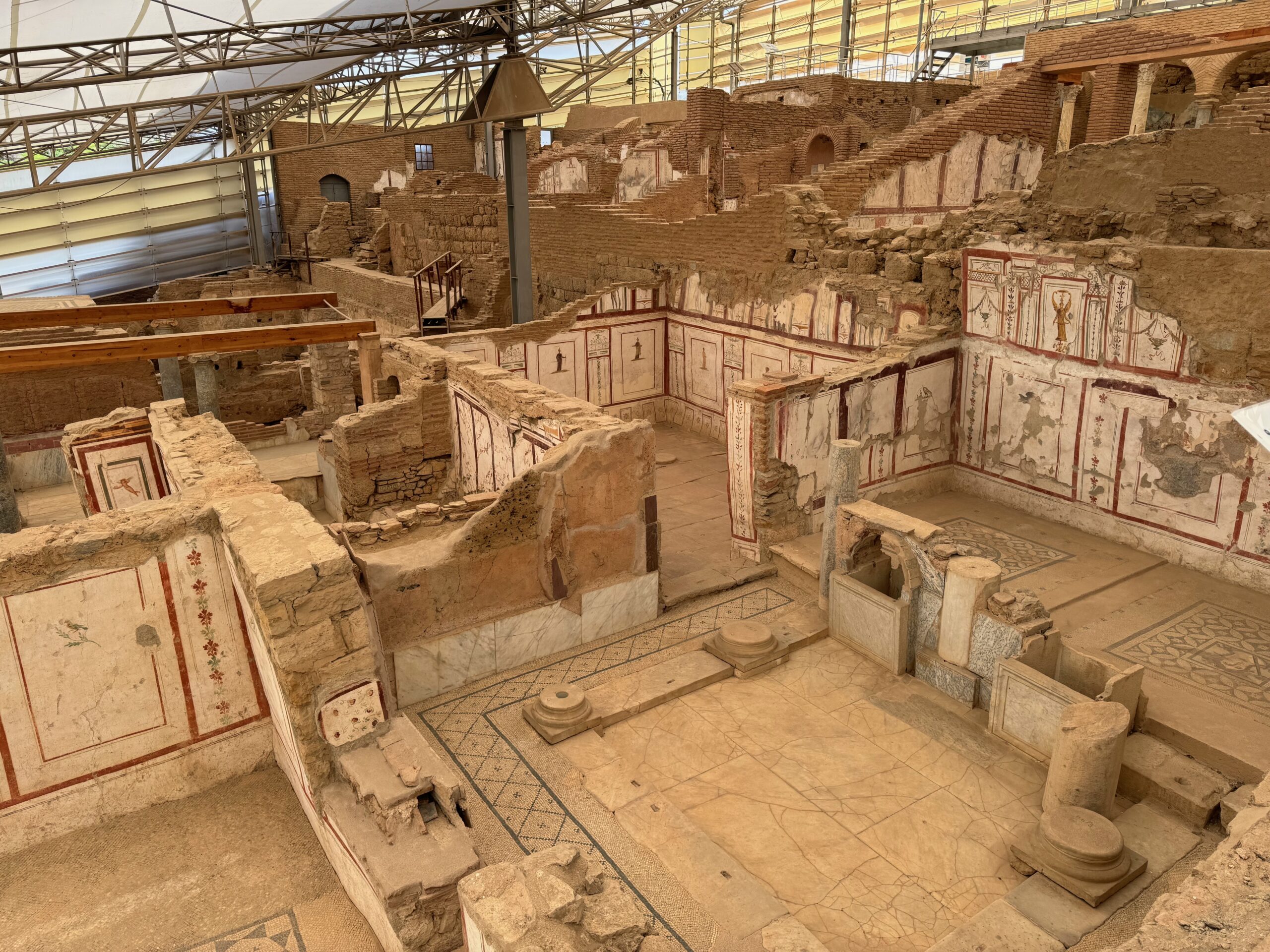
Also crucial to understanding the site was a visit to the Ephesus Museum, which I almost skipped out on as I had spent the afternoon in the Izmir archaeological museum just the day before. Many of the most impressive finds at the site are kept safe at the climate-controlled museum rather than out in the elements of the site itself.
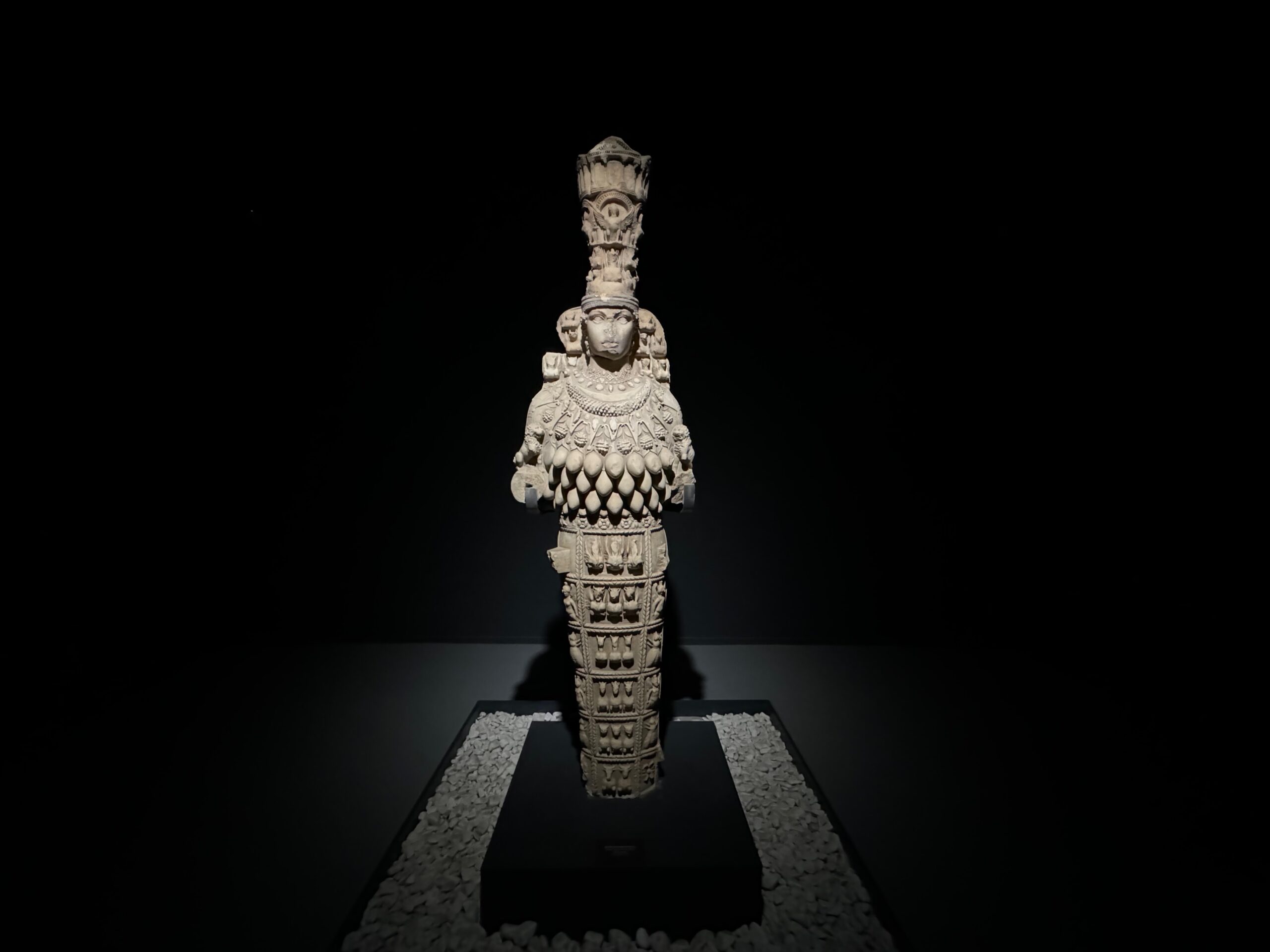
I also added on a trip to the Basilica of St. John the Apostle, which is said to hold the apostle’s tomb. Accordingly, a nun praying fervently in the corner was the only other person in the ruined church, which unless you are a believer, is likely not worth the stop or the ticket price. It does, however, provide a phenomenal viewpoint of the valley and the Isa Bey Mosque (currently under renovation) as well as, hilariously a glimpse of one of the seven wonders of the ancient world. No joking. From the viewpoint at the back of the ruined church, you can see the last remaining column of the Temple of Artemis, which was built around 550 BC and destroyed over 1,600 years ago.

Day two at Pamukkale and Hierapolis
It was a long day at Ephesus and I almost just relaxed in Izmir the next day. But I woke up early on Sunday and headed for the Avis to pick up the rental car to drive the nearly three hours to Pamukkale. I was a little nervous about driving in Turkey given my experiences in taxis from the Istanbul (utterly terrifying) but it was completely empty on the roads, and it was almost as if the rest of the drivers on the road knew that there was a tourist behind the wheel in my car and took it easy on me. The new freeway is smooth and while there is about 45 minutes of driving through Turkish towns, there was nothing particularly challenging about the journey.
If you put in the south gate of Pamukkale into your Google Maps, it will bring you to a parking lot where you can pay 30 TL ($0.95) to park for the day. Unfortunately, the ticket to the site itself isn’t quite as cheap and you can expect to pay Euro 30 for the combined Pamukkale/Hierapolis admission. Then, not long after presenting your ticket, there is a row of benches to take off your socks and shoes and then it’s up the snow-white calcium deposits to the top of the hill! At the bottom of the hill, the water is quite cold and it warms up as you get higher up the hill.
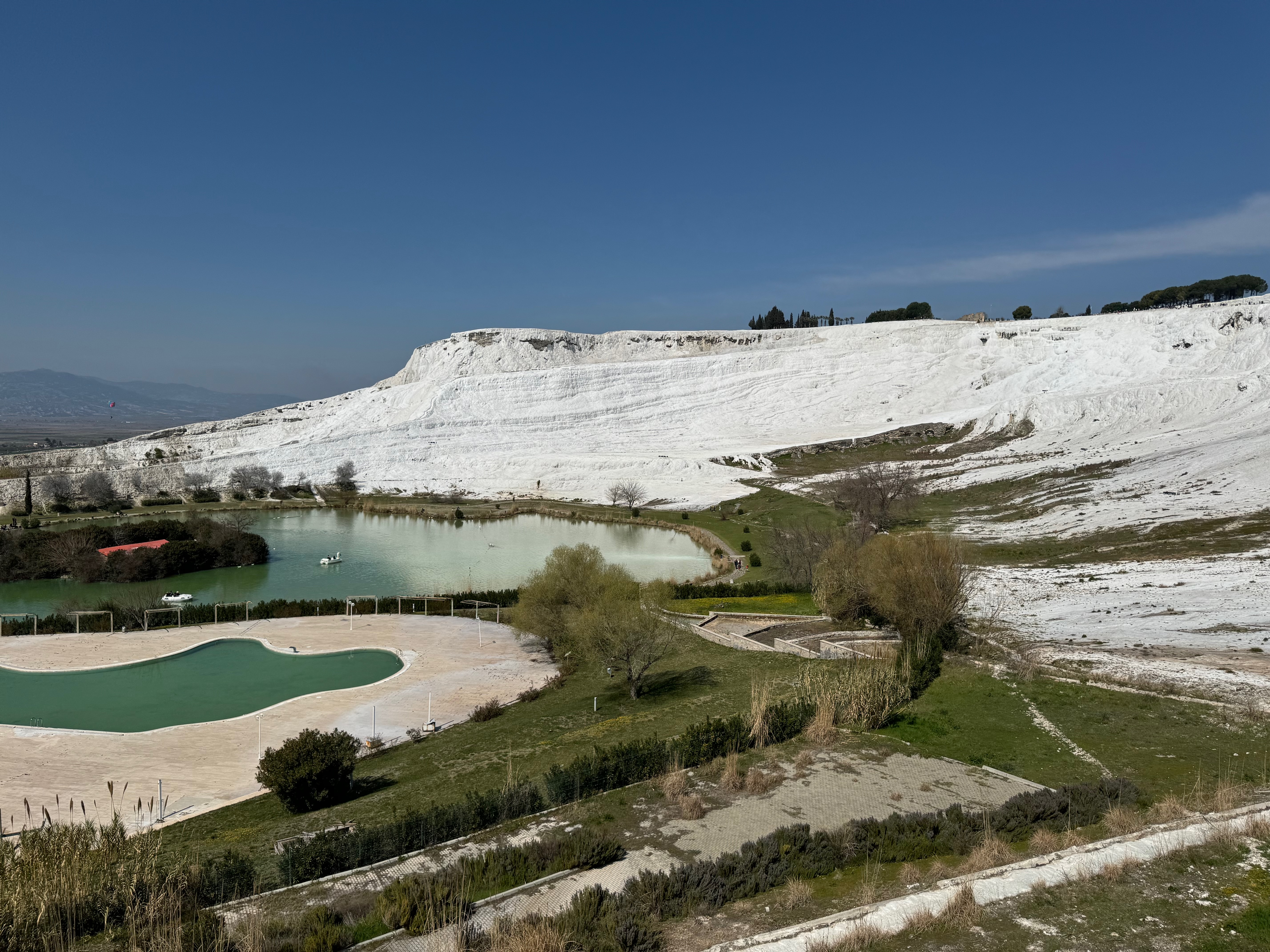
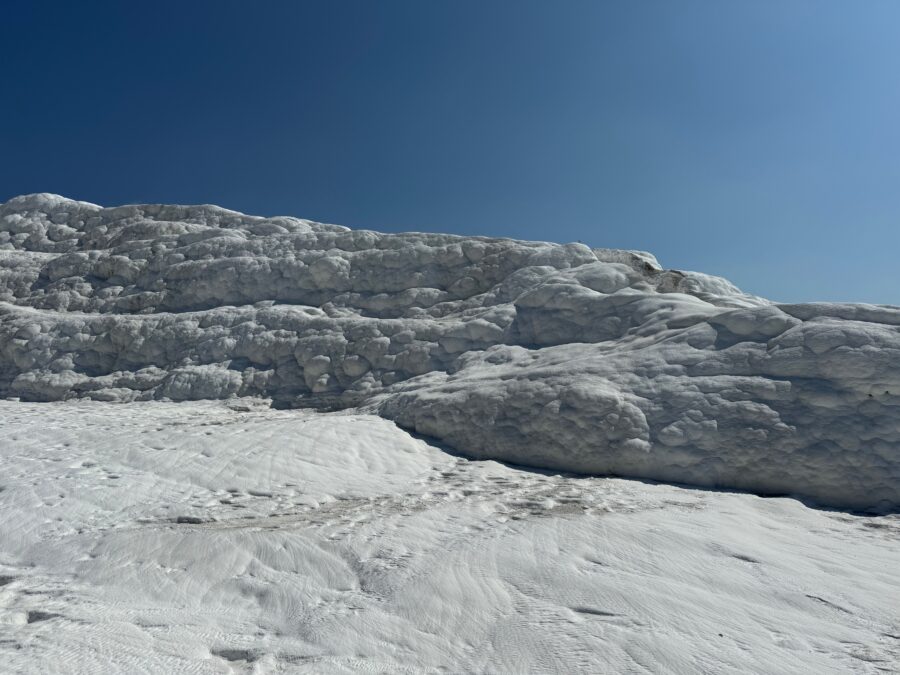
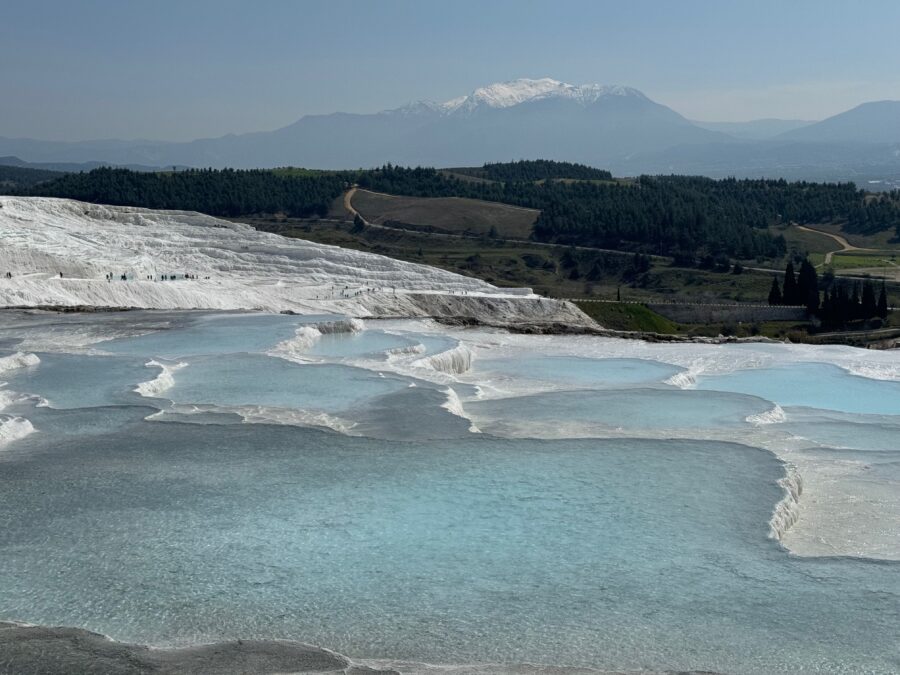
The surface itself isn’t slippery at all which was shocking to me. You look at this shiny white wet incline and think to yourself, “Wow, I wonder how many old tourists wipe out every day here,” but even elderly folks appeared to be doing just fine traversing the slope. Instead, it’s quite rough and hard and while it would be difficult to cut your feet, it’s definitely not too comfortable either. However, it’s just 10 minutes or so until you are at the top, where the ruins of Hierapolis await. I have to admit that I was not aware that there was an ancient Roman site perched atop Pamukkale, so this was something of a bonus, especially given how cool it was.
The mineral springs which bubble out of the top of the hill play a role in two of the most interesting sites at Hierapolis. One is the Antique Pool, where bathers lounge in the balmy waters against Roman columns that have collapsed into the pool over the centuries. It’s not many places in the world that you can bathe with antiquities!
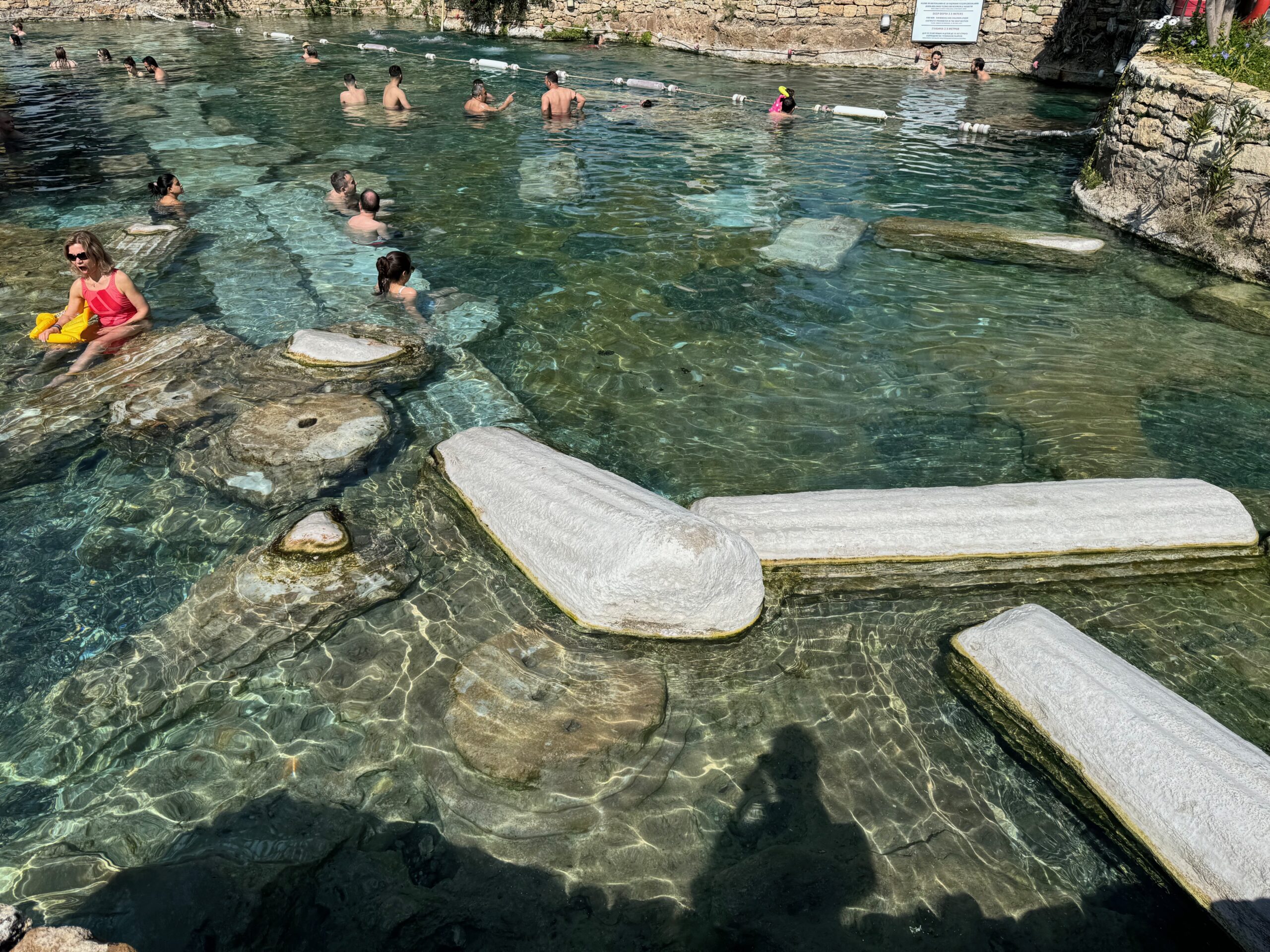
The other is the Gate to Hell. A Roman-era archway was constructed at the mouth of one of the springs and to this day, the water flowing out of the spring bubbles with poisonous gas, which is apparently strong enough to kill animals and people alike. At the Gate to Hell, bulls were sacrificed in front of a statue of Hades and the three-headed guard dog Cerberus without a single drop of blood being shed. The bulls would simply drop dead from inhaling the fumes for too long and this was enough to please the god of the underworld.

Up in the hills bloom beautiful wildflowers and behind the pool and the gate to hell is a theater which is smaller than the one at Ephesus but with more ornate features. Also, the tomb of the Apostle Phillip, who met an untimely end in the city. There are scores of sarcophaguses everywhere, as the site is one of the biggest necropolises of the ancient world. Many thousands came to be healed by the thermal waters, didn’t make it and were buried at the site instead. The entire site is nestled in the hills amid meadows and birdsong and it’s just an incredibly enjoyable and picturesque area which I highly recommend.
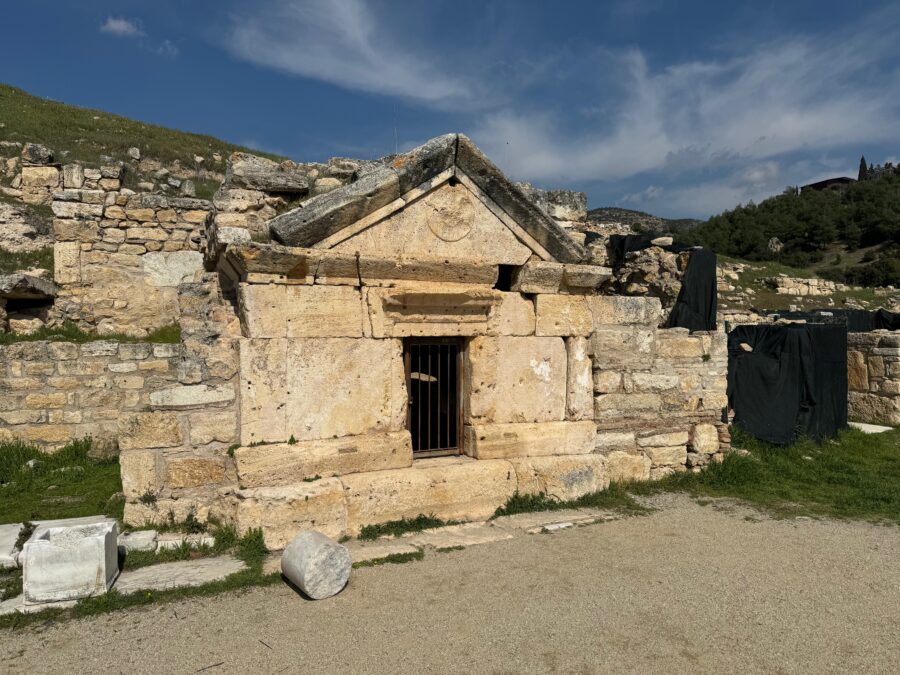

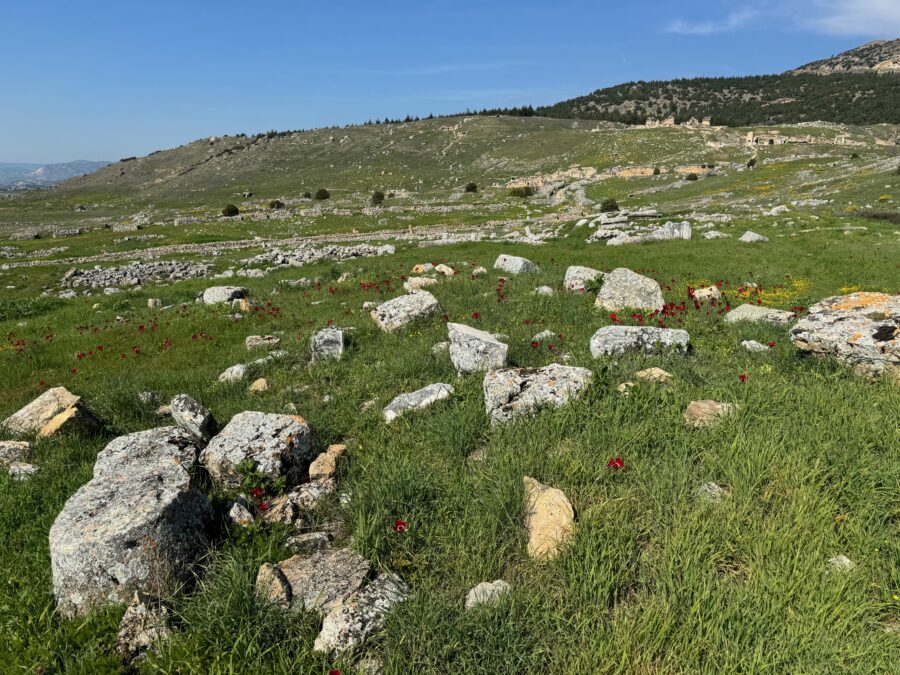
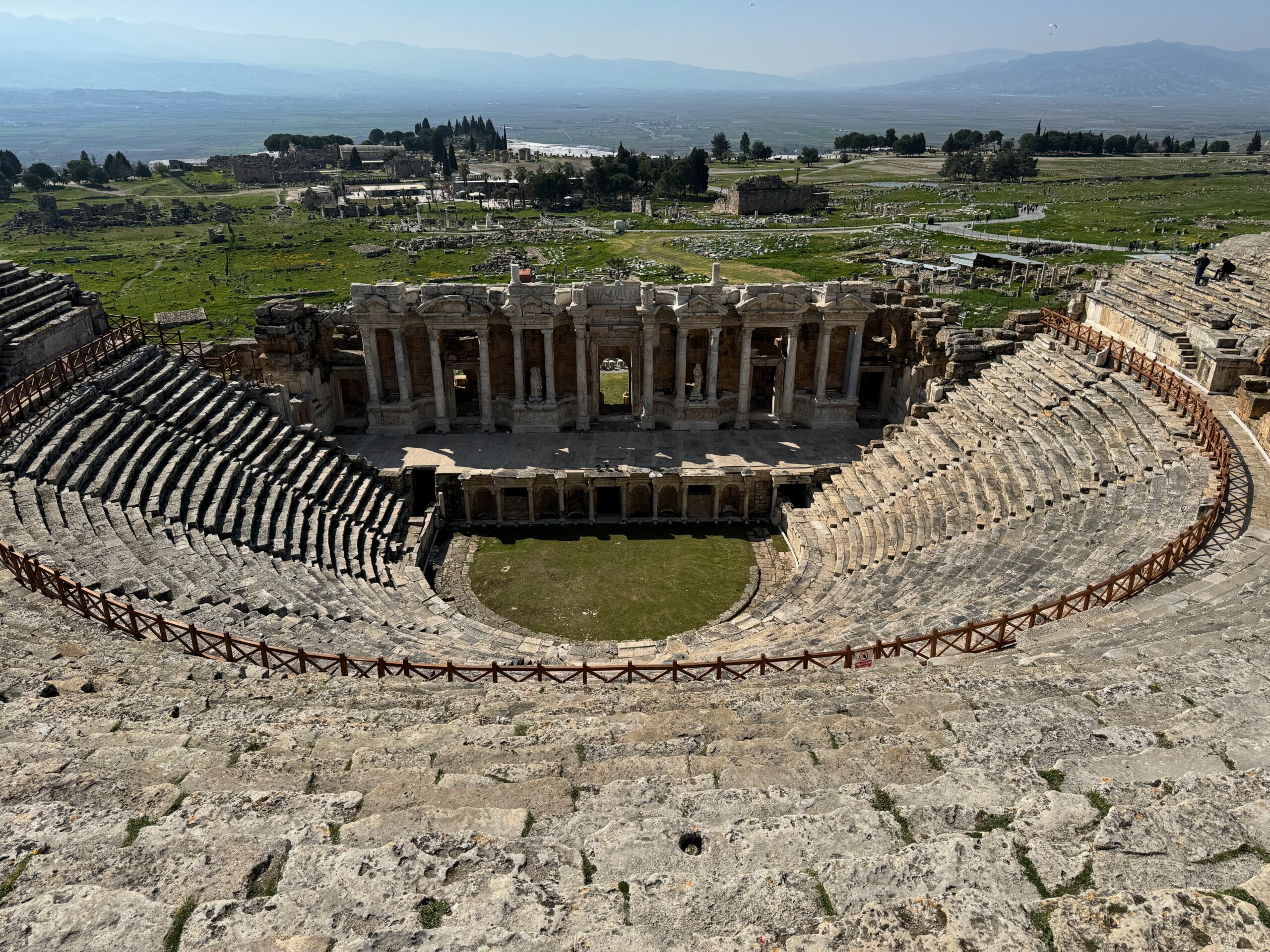
The bottom line
While the city of Izmir didn’t blow me away, it served as a great jumping-off point to more interesting and exciting historical sites. The new Marriott where I stayed will be getting reviewed shortly and there are plenty of food-related reasons to stick around in Izmir for a bit. Although the inflation has made Turkey more expensive than even a couple of years ago, it is still a phenomenal place to be a tourist especially during the offseason with sites such as Ephesus, Pamukkale and Hierapolis, significantly less crowded and more enjoyable than they would be during the summer.
